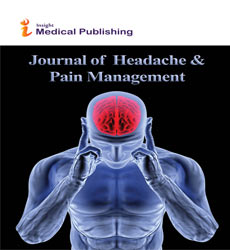Abstract
Improved and Sustained Functional Outcomes of a Multidisciplinary Care Program for Patients with Chronic Primary Headache Disorders
Context: In children and adolescents, primary headache is the most prevalent type of reported pain. When treating pediatric chronic headache conditions, the multidisciplinary approach has been found to be quite successful in both short-term and long-term improvement. However, outcome data from multidisciplinary clinics have largely been focused on headache frequency, with little data on function outcomes, such as disability and school attendance.
Objective: To evaluate a multidisciplinary clinic for pediatric headache and to determine if multidisciplinary treatment is more effective for certain headache diagnoses.
Method: 376 patients, age 6-18 years, who underwent a multidisciplinary evaluation at a tertiary headache clinic in a large, urban northeast pediatric hospital, were included in this study. Patients completed a measure of functional disability (FDI), rated the general intensity of their pain, and reported on school attendance and hospital visits at their initial visit, the first follow-up (Median=3 months) and the second follow up (Median=7 months).
Results: Patients reported a significant decrease in functional disability, pain intensity, emergency room visits, and school absences (ps<0.001) at the initial follow-up visit. These decreases remained significant at the second follow-up visit (ps<0.05). Outcomes did not significantly differ based on headache diagnosis.
Conclusion: A multidisciplinary plan presented at first visit and reviewed or compliance at follow-up visits, results in sustained functional improvement and increased school attendance, despite primary headache classification.
Author(s): Jonathan Rabner, Sarah Gottlieb, Lori Lazdowsky and Alyssa LeBel
Abstract | Full-Text | PDF
Share This Article
Abstracted/Indexed in
- Google Scholar
- Directory of Research Journal Indexing (DRJI)
- WorldCat
- Secret Search Engine Labs
Open Access Journals
- Aquaculture & Veterinary Science
- Chemistry & Chemical Sciences
- Clinical Sciences
- Engineering
- General Science
- Genetics & Molecular Biology
- Health Care & Nursing
- Immunology & Microbiology
- Materials Science
- Mathematics & Physics
- Medical Sciences
- Neurology & Psychiatry
- Oncology & Cancer Science
- Pharmaceutical Sciences
